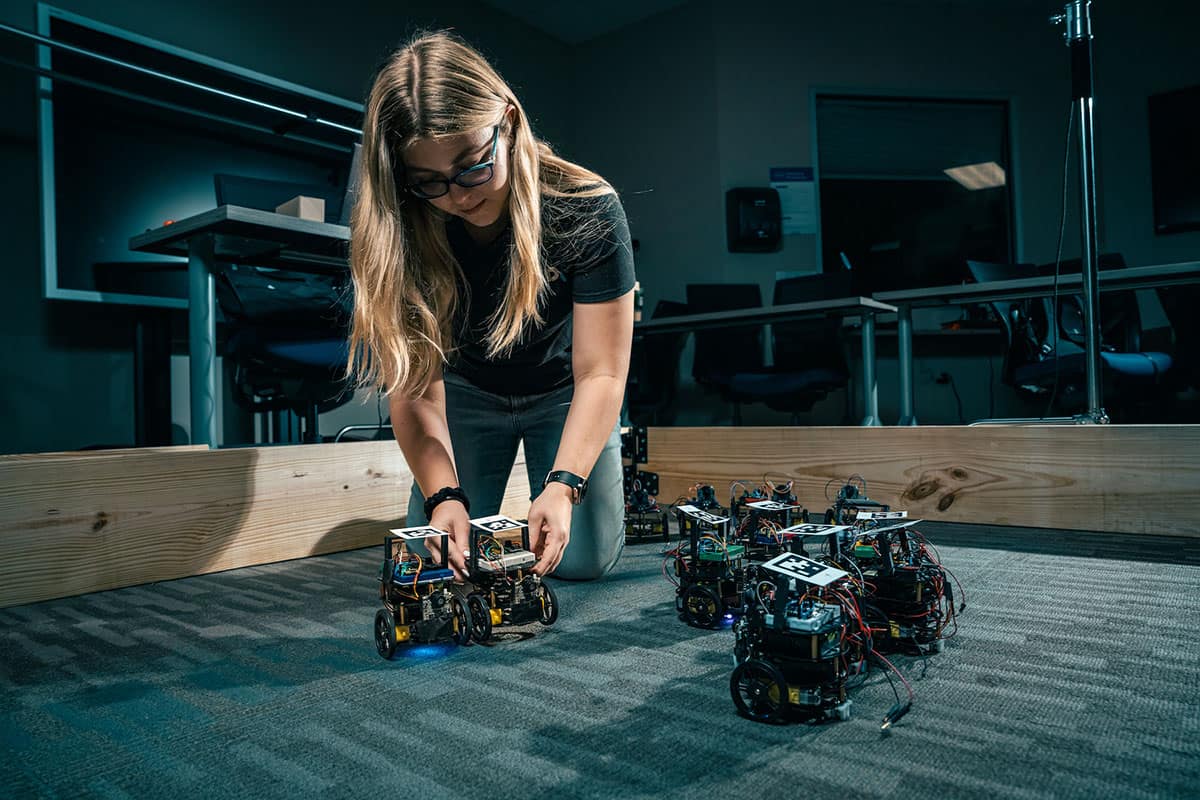Learning From Ants to Make Networks Safer

In a fascinating example of design inspired by nature, Embry-Riddle Aeronautical University’s researchers are developing systems to detect cyberattacks on swarms of drones and other networks by imitating the way ants locate intruders in their colonies.
According to Dr. Bryan Watson, assistant professor in the Department of Electrical Engineering and Computer Science and the project’s principal investigator, ants in a colony carry an odor from waxes they secrete called cuticular hydrocarbons (CHCs). The waxes are transferred among members of the colony through grooming, feeding and random contact. The ants’ odor, or CHC profile, evolves according to their environment and interactions. This allows them to recognize members of their own colony. Intruders to the colony do not possess the evolved odor and are immediately identified.
Watson and fellow researchers at Embry-Riddle Aeronautical University’s Biologically Inspired Design-for-Resilience Lab (BID4R) are developing mathematical models of this type of ant behavior that can be applied to networked drones or other networked systems, including the smart networks that include household appliances. The team will conduct simulation-based tests of an intruder-detection algorithm and perform real-world tests with a swarm of robotic vehicles. The vehicles are programmed to interact at timed intervals and change each other’s internal codes, similar to how the ants impact each other.
“Our central hypothesis,” which has already been verified as a viable strategy, said Watson, “is that the application of this response to colony intruders will enhance the ability of networked systems to identify imposters.”
The work is being supported by a grant from the National Science Foundation (NSF).
The robotic vehicles that make up the swarm are programmed to mimic the behavior of ants in a colony. (Photo: Embry-Riddle/William Fredette-Huffman)
Student researcher Rasika Kale, who is earning a Master of Science in Systems Engineering, offered further details about the project.
“In a system consisting of multiple agents, there exists a risk of untrustworthy information being shared through even a single compromised or ‘faulted’ agent,” Kale said. “A centralized control to manage these systems is computationally expensive, but biological phenomena demonstrated by eusocial insect colonies such as those of ants and bees provide innovative solutions to this problem,” she added.
“The research conducted by Dr. Watson and the BID4R lab has far-reaching applications in different domains,” said Dr. Massood Towhidnejad, chair of the Department of Electrical Engineering and Computer Science. “Imagine you have a swarm of uncrewed vehicles protecting a high-value asset, and an intruder wants to get close to the asset to destroy it. The algorithm defined by this project can potentially identify the intruder and prevent it from getting close.”
Part of the plan to validate the algorithm will include a cybersecurity challenge for high-performing cybersecurity students and students who are veterans.
Watson, a veteran who earned his undergraduate degree in systems engineering at the U.S. Naval Academy, wrote in the NSF grant abstract that the research validation testing will expose student veterans to systems engineering research and also leverage their “unique understanding of multi-agent systems, resilience and system thinking” gained through their operational experience.
Kale, who will earn her degree in spring 2025, said the research is preparing her for a future career as an aerospace systems engineer working with uncrewed aerial vehicles, airplanes and spacecraft.
“I want to create robust solutions for multi-agent system interactions, adopting a higher-system-level view and analyzing how smaller components affect the system as a whole,” Kale said. “This research aligns with that exactly by analyzing how behavior of a single agent affects the swarm as a whole. It is an invaluable addition to my skill set as an engineer.”

 Michaela Jarvis
Michaela Jarvis